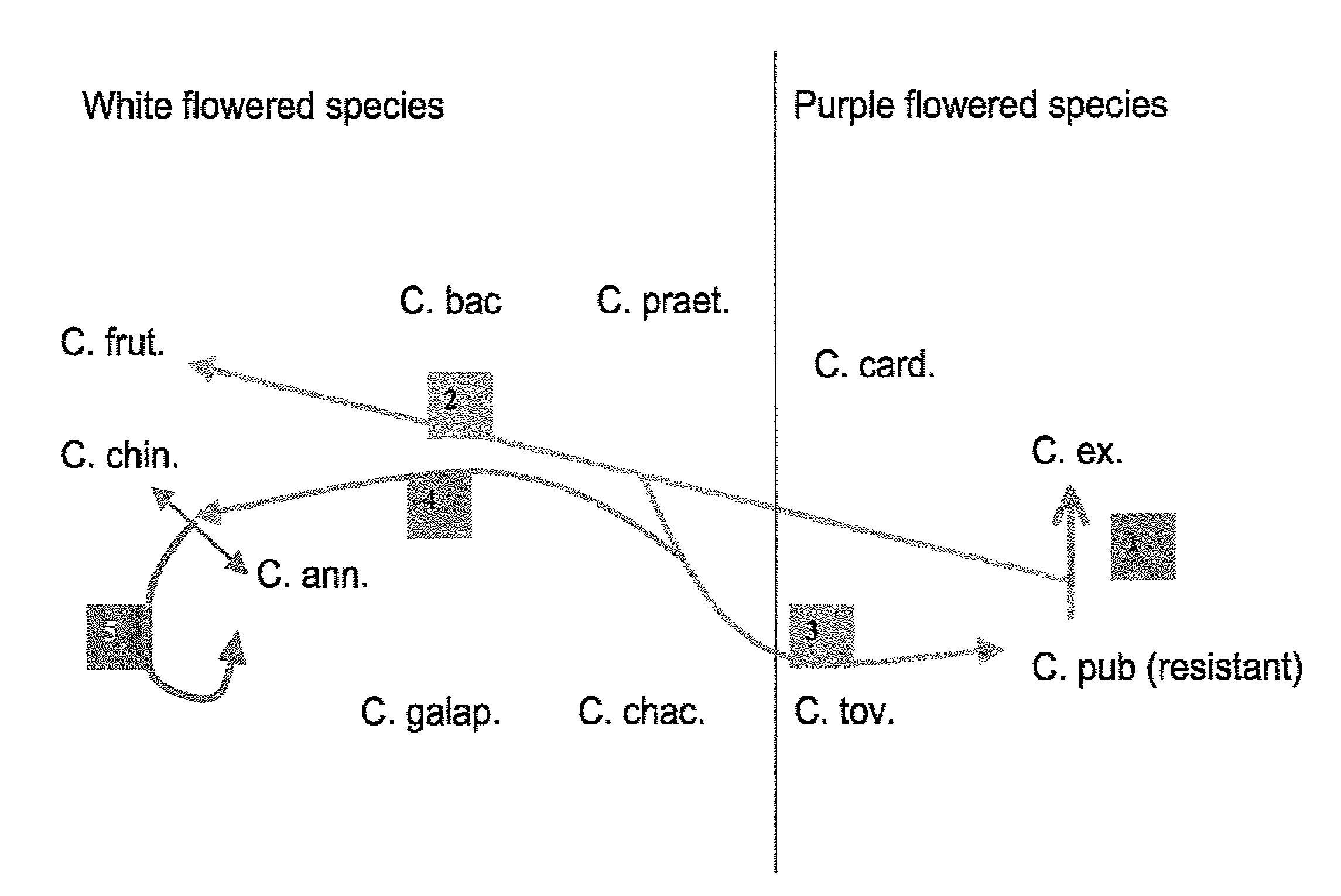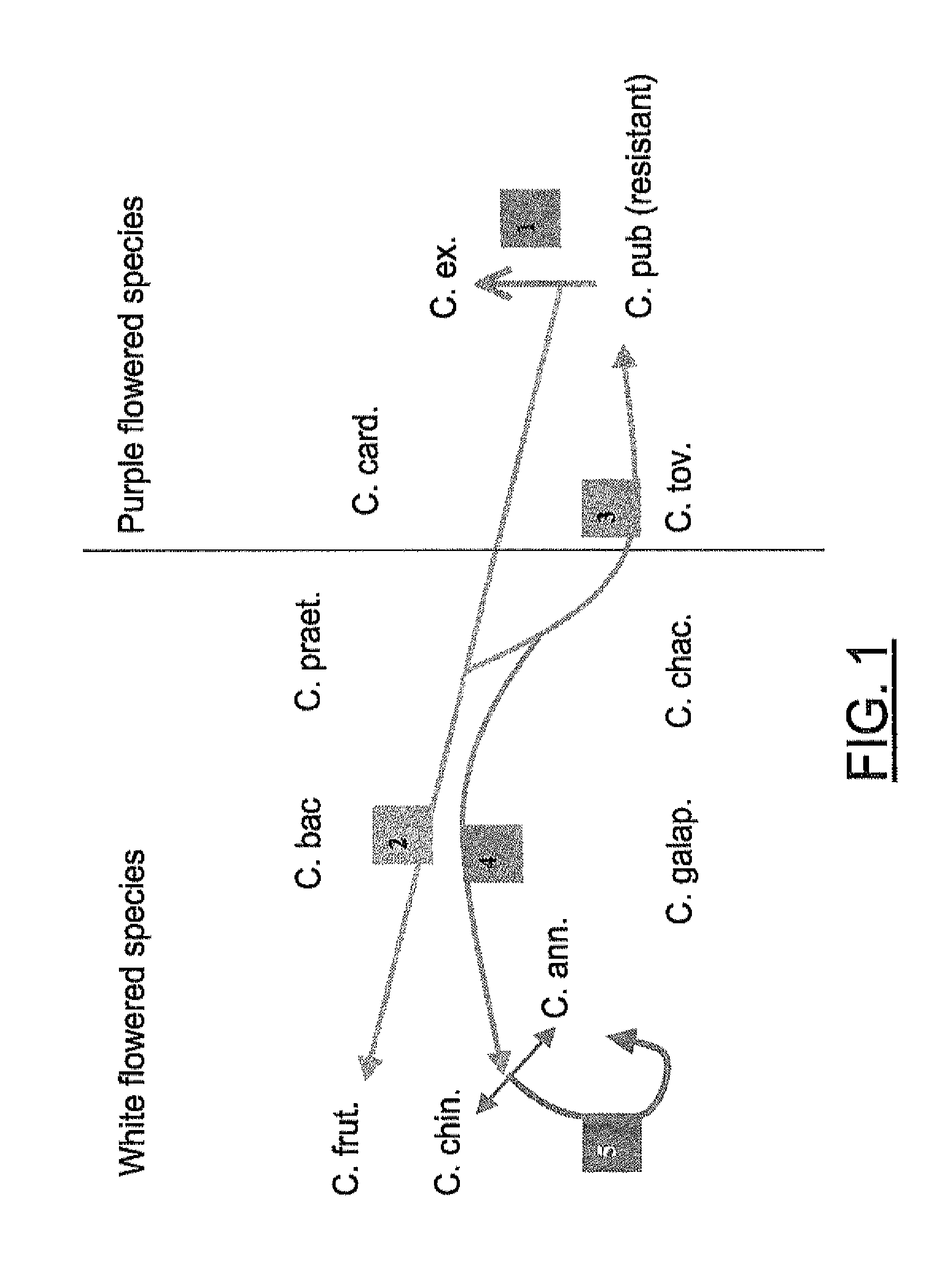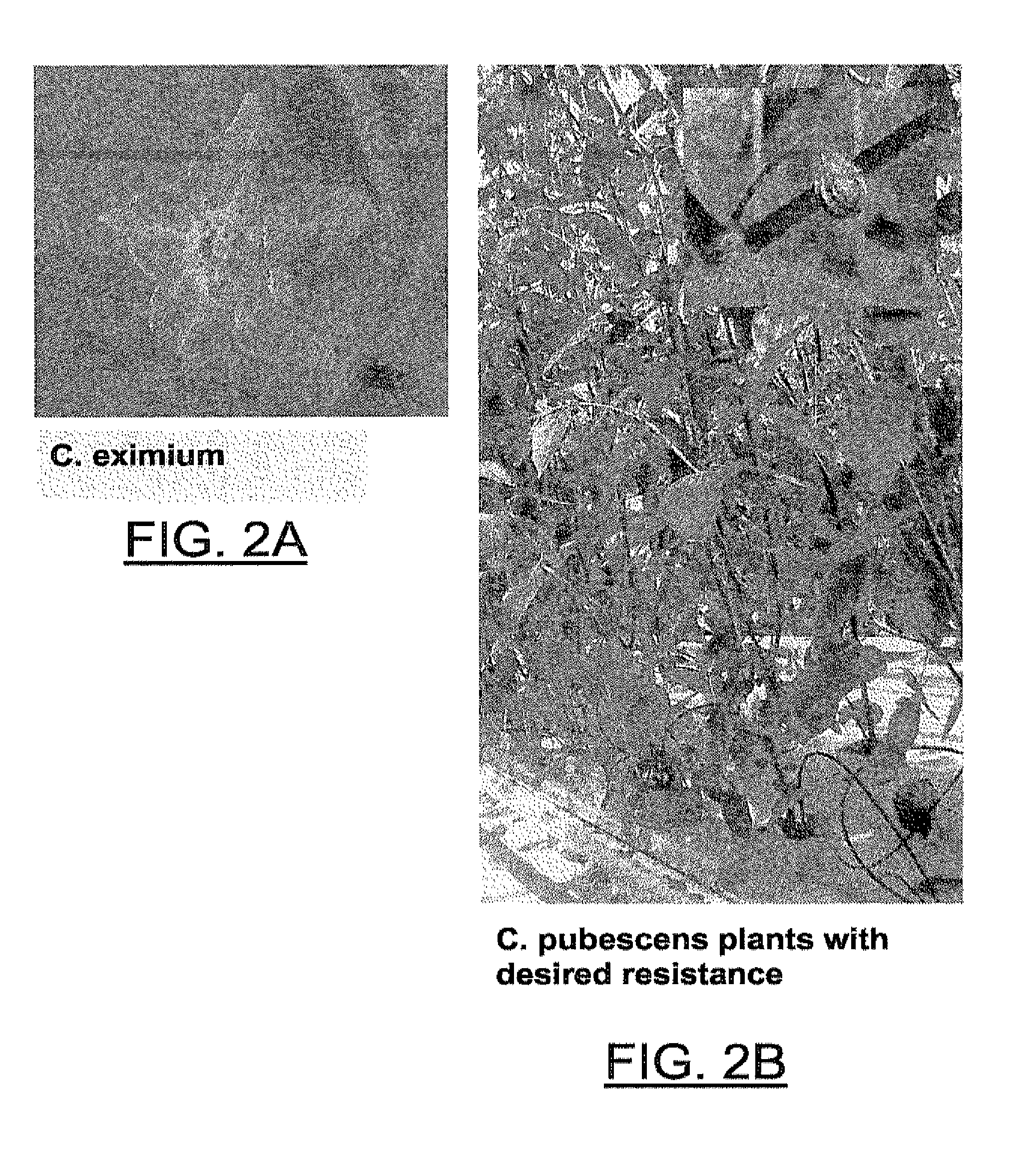Method for transferring one or more genetic traits from a plant of the purple-flowered capsicum species to a plant of the white-flowered capsicum species
a technology of purpleflowered capsicum and whiteflowered capsicum, which is applied in the field of transferring one or more genetic traits from a plant of the purpleflowered capsicum species to a plant of the whiteflowered capsicum species, can solve the problems of reduced yield, secondary fruit rot, sun scald, etc., and achieve the effect of improving yield
- Summary
- Abstract
- Description
- Claims
- Application Information
AI Technical Summary
Benefits of technology
Problems solved by technology
Method used
Image
Examples
example
[0045]Methods:
[0046]Seeds were sown on vermiculate, potted into rockwool, blocks, and fertilized and propagated until flowering. Flowerbuds were emasculated and pollinated with the chosen fatherlines. Between 24-28 days after pollination fruits were harvested, surface sterilised and opened under sterile conditions. Embryos from all seeds were isolated aseptically and transferred to embryo rescue (ER) medium as described by Sibi et al., (Aim. Amelior. Plantes, 29: 583-606, 1979). After 1-2 weeks well developed plants were transferred to MS medium (Murashige T. and Skoog F., Physiol. Plant 15: 473497, 1962), supplemented with 0.8% agar and 20 g / l sucrose. Plants with a well developed root system were subsequently transferred to the greenhouse and adapted carefully to its conditions.
[0047]Leaves of 4-6 weeks old plants were detached and inoculated with Xanthomonas campestris vesicatoria race VI to select the resistant plants. The bacterial clone is stored in the freezer and grown on ag...
PUM
 Login to View More
Login to View More Abstract
Description
Claims
Application Information
 Login to View More
Login to View More - R&D
- Intellectual Property
- Life Sciences
- Materials
- Tech Scout
- Unparalleled Data Quality
- Higher Quality Content
- 60% Fewer Hallucinations
Browse by: Latest US Patents, China's latest patents, Technical Efficacy Thesaurus, Application Domain, Technology Topic, Popular Technical Reports.
© 2025 PatSnap. All rights reserved.Legal|Privacy policy|Modern Slavery Act Transparency Statement|Sitemap|About US| Contact US: help@patsnap.com



